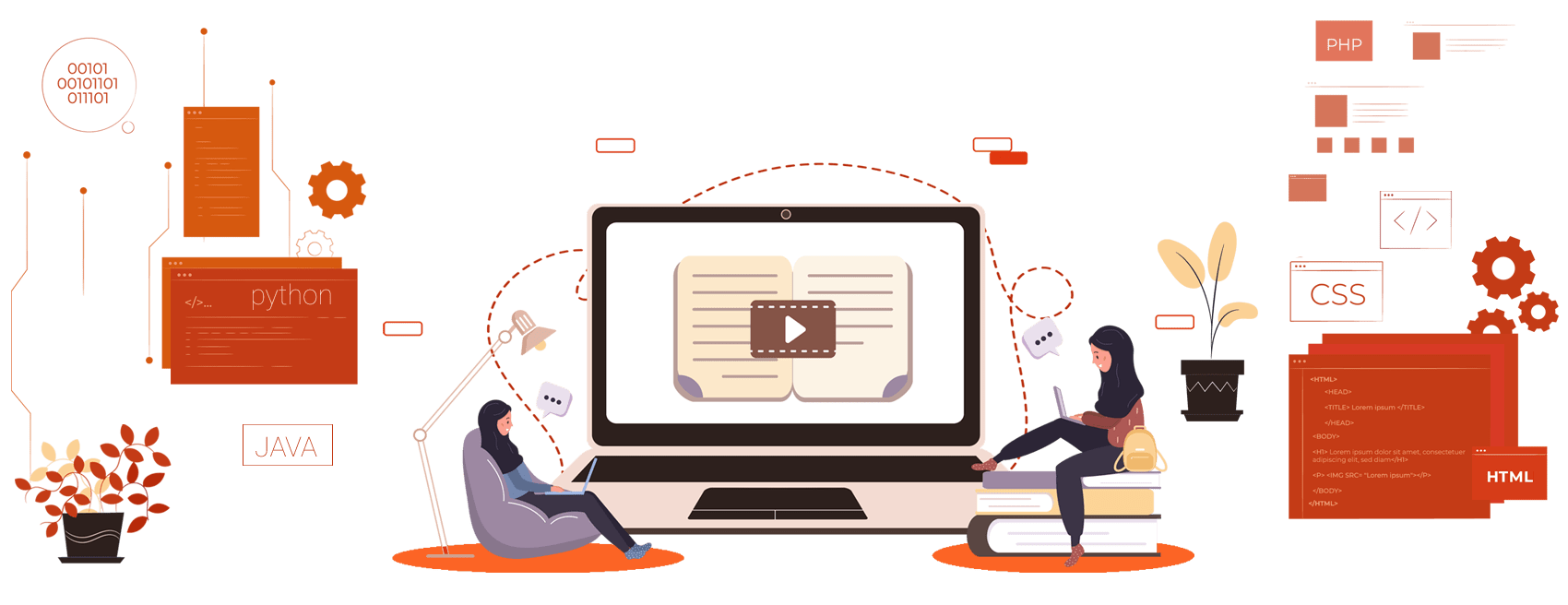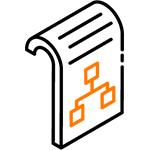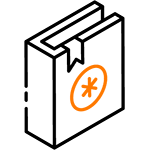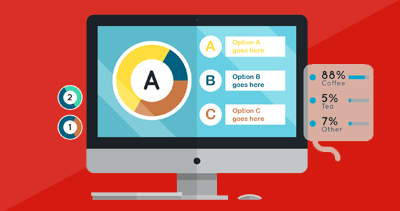
THIS CERTIFICATION IS AUTHENTIC AND ACCEPTED BY EMPLOYERS. HOW ? Read more
What You get
with this Course
REST APIs with Flask Python Certification

WHY IS THIS VIDEO TRAINING ONLINE CERTIFICATION HIGH IN DEMAND?
What is Rest API?
REST (representational state transfer) is a software architectural style that was developed to guide the design and development of the World Wide Web's structure. REST establishes a set of guidelines for how an Internet-scale distributed hypermedia system, such as the Web, should be designed. The REST architectural style emphasizes scalability of component interactions, uniform interfaces, component deployment independence, and the establishment of a layered architecture to enable caching components to minimize user-perceived lag, enforce security, and encapsulate legacy systems.
REST is a generally established set of rules for establishing stateless, dependable online APIs that have been used throughout the software industry. RESTful is an informal term for a web API that follows the REST requirements. RESTful online APIs are primarily built on HTTP protocols for accessing resources via URL-encoded parameters and data transmission using JSON or XML.
On the World Wide Web, "web resources" were first defined as URL-identified documents or files. Today's definition is much broader and more abstract, encompassing anything, object, or action that can be identified, named, addressed, handled, or performed in any way on the Internet. Requests to a resource's URI in a RESTful Web service elicit a response with a payload formatted in HTML, XML, JSON, or another format. The response could, for example, certify that the resource state has changed. Hypertext links to similar resources can also be included in the response. HTTP is the most commonly used protocol for these requests and responses. It supports GET, POST, PUT, and DELETE actions (HTTP methods). RESTful systems aim for quick performance, dependability, and the potential to grow by reusing components that can be controlled and modified without affecting the system as a whole, even while it is running, using a stateless protocol and standard procedures.
Performance, durability, simplicity, customizability, visibility, adaptability, and dependability are all goals of REST. This is accomplished by adhering to REST principles such as client-server design, statelessness, cacheability, layered systems, code-on-demand support, and a unified interface. For a system to be labeled as RESTful, certain principles must be followed.
How it works?
REST determines the structure of an API. Developers must adhere to a set of guidelines when creating APIs. Referring to a URL, for example, is required by law to offer some information. The data delivered is referred to as a Response, while every URL is referred to as a Request. A transaction is deconstructed via the REST API into a series of little components. Each component is responsible for a different aspect of a transaction. It is a versatile development technique due to its modularity.
HTTP requests, as described by the RFC 2616 standard, are used by a REST API. It makes use of the requests listed below:
Data is retrieved using a GET request.
To alter the state of data, a PUT request is utilized (such as an object, file, or block)
For data creation, send a POST request.
Use the DELETE command to get rid of it.
REST APIs use a variety of HTTP status codes, which are listed below.
What is Python?
Python is a free and open-source programming language for Linux, Mac OS X, and Windows. This programming language is considered a beginner's language and is capable of handling any data science or data analysis task.
Python is a high-level programming language with a syntax that is similar to that of a natural language. It can be used for a multitude of things, such as:
Analyzing data
Development of web applications
Automation/scripting
Python as a Machine Learning Tool
What exactly is a flask?
Flask is a microweb framework written in Python. Because it does not require the use of any specific tools or libraries, it is referred to as a microframework. It lacks a database abstraction layer, form validation, and other components that rely on third-party libraries to accomplish common tasks. Extensions, on the other hand, may be used to add application features that aren't included in Flask. Extensions are available for object-relational mappers, form validation, upload handling, and other framework-related features.
Two apps that use the Flask framework include Pinterest and LinkedIn.
Flask is made up of what?
The microstructure of the organism one of the Pallets Projects is Flask, which is based on a few of others.
Werkzeug is a BSD-licensed Python utility package that acts as a toolkit for WSGI applications. Werkzeug may be used to develop software objects that perform the request, response, and utility operations. It may be used to build a custom software framework on Python 2.7, 3.5, and beyond.
Ronacher also developed Jinja, a BSD-licensed template engine for the Python programming language. It handles templates with a sandbox, similar to the Django web framework.
MarkupSafe is a BSD-licensed string manipulation package for the Python programming language. MarkupSafe enhances the Python string type by marking its contents as "safe"; using MarkupSafe with regular strings automatically escape unmarked strings while avoiding double escaping of already marked strings.
dangerous is a BSD-licensed safe data serialization package for the Python programming language. It's used to keep a Flask application's session in a cookie without allowing users to change the session's contents.
What are the features of Flask?
Debugging and development server
RESTful request dispatching has integrated support for unit testing.
Uses Templating jinja
Secure cookies are supported (client-side sessions)
Unicode-based and complies with WSGI 1.0.
Documentation is extensive.
Compatibility with Google App Engine
Extensions are provided to improve desired characteristics.
What you'll learn?
The main highlights are following:
Introduction
A Full Python Refresher
Your first REST API
Flask-RESTful for more efficient development
Storing resources in a SQL database
Simplifying storage with Flask-SQLAlchemy
Git—version control
Deploying Flask apps to Heroku
Deploying Flask apps to our own server
Security in your REST APIs
Token refreshing and Flask-JWT-Extended
Why Brainmeasures?
Brainmeasures is an ISO-certified company that offers you high-end certification courses and many other services to boost your career. We hire experienced and qualified experts to create in-depth and prominent content courses to train our learners whether they are amateurs or have some experience in the field. We provide the best courses to offer you top-notch skills with a broad scope.
All of the services provided by Brainmeasures are offered at a very minimal and reasonable price. We also provide considerable discounts on various skills and courses to make them affordable for everyone.
At Brainmeasures, You will be provided with high-end courses after which you can get a hard copy certificate. You only have to clear a test and you will get a certificate which assures you a bright future by securing your job. Great companies in no time will hire you.
There are also many other facilities and features provided by Brainmeasures. To check these services click on the following links:
1300 PDF Courses (Technical and Non-Technical)
500+ Video Courses (Technical and Non-Technical)
Reviews (If you like our services let others know)
Course Syllabus
| Getting Started | 11 lectures | 17 mins |
| HTML and foundation | 11 lectures | 17 mins |
| Some title goes here | Preview | 01:42 |
| Welcome guide document | 10 Pages | |
| Some title goes here | 07:42 | |
| 2 Some title goes here | 07:42 | |
| Hello Some title goes here | 07:42 | |
| This is Some title goes here | 07:42 |
| CSS and foundation | 17 lectures | 87 mins |
| Some title goes here | Preview | 01:42 |
| Welcome guide document | 10 Pages | |
| Some title goes here | 07:42 | |
| 2 Some title goes here | 07:42 | |
| Hello Some title goes here | 07:42 | |
| This is Some title goes here | 07:42 |
| Making Responsive Website | 17 lectures | 87 mins |
| Some title goes here | Preview | 01:42 |
| Welcome guide document | 10 Pages | |
| Some title goes here | 07:42 | |
| 2 Some title goes here | 07:42 | |
| Hello Some title goes here | 07:42 | |
| This is Some title goes here | 07:42 |
| Learn Sass less Scss | 17 lectures | 87 mins |
| Some title goes here | Preview | 01:42 |
| Welcome guide document | 10 Pages | |
| Some title goes here | 07:42 | |
| 2 Some title goes here | 07:42 | |
| Hello Some title goes here | 07:42 | |
| This is Some title goes here | 07:42 |
| Learn about Cpanel and file uploads | 17 lectures | 87 mins |
| Some title goes here | Preview | 01:42 |
| Welcome guide document | 10 Pages | |
| Some title goes here | 07:42 | |
| 2 Some title goes here | 07:42 | |
| Hello Some title goes here | 07:42 | |
| This is Some title goes here | 07:42 |
Do you want this course
to learn
LIVE
?
Enroll in this course now and avail all the benefits.

Learn from industry
Experts
LIVE
?
Learn One-to-One Live Course - Coming Soon.



Brainmeasures Certifications are acknowledged globally because the tests are conducted under the strict vigilance of trained proctors and are recorded which makes Brainmeausres testing system the most authentic testing platform.
Enroll NowOur Hiring Partners
Brainmeasures certified Professionals work with global leaders.

Corporate Training
If you want to give the Trending technology experience to your esteemed employees, we are here to help you!
CONTACT CORPORATE CO-ORDINATOR
What makes REST APIs with Flask Python Certificationunique?
VIDEO ONLINE COURSE
The video online course is well-structured and comprehensive.
EASY TO UNDERSTAND
The topics are organized in proper sequence to enable the candidate understand them easily.
SELF-EXPLANATORY
Easy to understand and implement in real life.
MORE ATTRACTIVE
Sufficient pictures, tables, graphs have been provided to make this online Course more attractive to the readers.
PROCTOR SURVELIANCE
Final certification exam conducted under surveillance of trained human proctor.
HARD COPY SHIPPED
We will ship your hard copy anywhere you ask for.
-

- We will ship your hard copy anywhere you ask for.
- SAMPLE HARDCOPY CETIFICATE
-

- Immediately after taking the test you can check your scores with detailed.
- Immediately download soft copy certificate.
- VIEW ANALYSIS REPORT
-

- ENROLL FOR REST APIs with Flask Python Certification - VIDEO COURSE AND CERTIFICATION PROGRAM
- REGISTER NOW
-

- Online Video course by Highly qualified Trainers.
-

- If you have any query our trainers are accessible easily.
- Send your questions and get answers within 7 working days.
-

- Final exam is proctored – you will be monitored throughout, this is done using our high-end Proctor software, so that you need not go to any special location but take it from your own PC.
- This testing format matches world-class testing standards.
- Certificate will mention wording proctored to prove the authenticity of your knowledge.
-

- You can take any number of retakes if you are not satisfied with your score or failed to pass.
- Test re-takes are paid, each retake is worth $ 50.
-

- Earn high.
- Brainmeasures certificates are honoured by employees worldwide.
- Get desired position in your organization.
TAKE A FREE TEST
REST APIs with Flask Python Certification
Take free practice test now
Reviews ( click here to Read all )
Why choose Us
In today’s corporate world, a single wrong decision can cost you millions; so you cannot afford to ignore any indemnities you may incur from a single wrong hiring decision. Hiring mistakes include the cost of termination, replacement, time and productivity loss while new employees settle into their new job.
Our Mission
Our Mission is simply to help you attain Course Name knowledge which is at par with best, we want to help you understand Course Name tools so that you can use them when you have to carry a Course Name project and make Course Name simple and learnable.




























